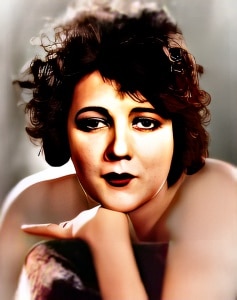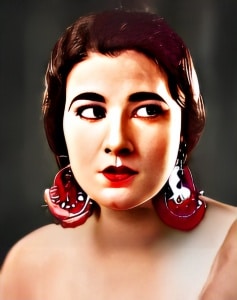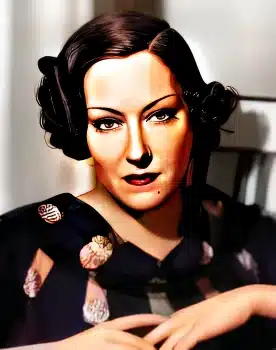 Barbara La Marr, born on July 28, 1896, in Yakima, Washington, was an enigmatic and mesmerizing actress of the silent film era.
Barbara La Marr, born on July 28, 1896, in Yakima, Washington, was an enigmatic and mesmerizing actress of the silent film era.
Her extraordinary beauty, exceptional talent, and tumultuous personal life have made her a legendary figure in the history of Hollywood. While her life was tragically short, her impact on early cinema and her role in “ Souls for Sale” (1923) continue to captivate film enthusiasts and historians.
La Marr’s journey into the world of entertainment began as a dancer and vaudeville performer. Her striking looks and stage presence quickly drew the attention of Hollywood, leading to her entry into silent cinema in the early 1920s. She gained recognition for her role in “ The Prisoner of Zenda” (1922), directed by Rex Ingram, where she portrayed Antoinette de Mauban, a seductive and manipulative character. Her magnetic performance in the film propelled her to stardom and solidified her image as a siren of the silent screen.
One of the defining moments of La Marr’s career was her role in “ Souls for Sale” (1923), directed by Rupert Hughes. The film is a poignant portrayal of the early days of Hollywood and the dreams of aspiring actors. La Marr played the role of Remember Steddon, a young woman who journeys to Hollywood in pursuit of fame and fortune. Her performance added depth to the narrative, capturing the essence of Hollywood during its formative years. “ Souls for Sale” remains a testament to La Marr’s ability to breathe life into complex characters.
Barbara La Marr’s on-screen presence extended beyond her allure; she had the ability to portray multifaceted characters with depth and nuance. Her talents were not limited to acting; she was also a successful screenwriter and novelist. Her skills as a writer added an extra layer of authenticity to her characters and showcased her versatility as an artist.
Despite her undeniable talent and allure, La Marr’s personal life was fraught with challenges. Health issues and a tumultuous love life marked her private struggles. Her tragic death at the young age of 29 in 1926 marked the end of a promising career and left a sense of unfulfilled potential.
La Marr’s legacy in Hollywood remains enduring, and her contribution to the silent film era continues to be celebrated. Her extraordinary beauty, captivating presence, and her ability to bring complex characters to life have solidified her place in cinematic history.
Barbara La Marr’s impact on Hollywood extended beyond her work in front of the camera. Her writing contributions, particularly her screenwriting for “The Shooting of Dan McGrew” (1924), added depth and authenticity to the narrative, showcasing her multifaceted talents.
Her untimely death in 1926 was a significant loss to the world of cinema, but her legacy endures as a testament to the glamour and allure of the silent film era. Barbara La Marr’s contributions to the world of film, both as an actress and writer, have secured her a place in the pantheon of silent film legends, making her a beloved and celebrated figure in the history of American cinema. Her story, both on and off the screen, remains a captivating chapter in the annals of Hollywood’s golden age.
Loading live eBay listings...




